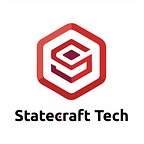Blockchain strict protects patient data.Hold up a remote medical treatment umbrella
【Published by: DigiTimes | Editor: Hong Huan-Zhou | Translator: Statecraft 】
Smart healthcare-related technologies are maturing and are now in the application phase. Although telemedicine provides patients with more convenient services, this technology poses potential security risks. With the increase of networked devices, hospitals with low protection of the security system are likely to become targets of hackers, and cyber attacks not only affect the operation of the hospital but also may lead to the outflow of patient personal data.
According to Healthcare IT News, Distributed Ledger Technology (DLT) keeps patient data and medical records intact and confidential, while more reliable because of the anonymity, non-tamperability and encryption security of the blockchain to transfer data between medical institutions.
The report pointed out that in recent years, hospitals have invested in blockchain technology to build a large amount of medical data, and store patient records in the blockchain database, while network security solution providers encrypt the medical records to view or modify the disease. When you have health data, you must use a private key to access the hospital platform and greatly improve the safety of medical records.
When the blockchain is applied to telemedicine, it can break the distance barrier. All the information about the computer needs to be approved and verified by the patient and doctor to transmit the digital medical data, every step of deleting and adding data is clearly recorded in the blockchain platform, effectively protecting the rights and interests of patients.
In this regard, Blaise Wabo, associate director of network security technology service operator A-LIGN, pointed out that home telemedicine and sensors and medical devices collect patient information, complete medical information, allergy drugs and daily working hours, when doctors write down After the medical records that cannot be changed at will, the blockchain can integrate the medical records of different hospitals.
However, deploying blockchains also has shortcomings. The main obstacles in telemedicine include cost, lack of system standardization and device interoperability, while blockchain technology consumes a lot of power due to uninterrupted computing. For remote areas lacking infrastructure, Will become an insurmountable pain point.
■ Source: DigiTimes
■ Note: Please specify the source or references of the article for reproduced.
■ Solemn declaration: We reproduced articles and news for purpose of sharing information. Copyright belongs to the original author. If there is any infringement/error, please contact us as soon as possible, modify or delete action will be implemented immediately. Content analysis is for information purposes only and does not constitute any investment advice.
■ View Disclaimer: the views, thoughts, and opinions expressed in the text belong solely to the author, and not necessarily to the author’s employer, organization, committee or other group or individual.
■ Please visit our site: Statecraft for more information and the latest news update.
■ Follow Us 👉 Instagram| Facebook | Telegram | Twitter | Youtube | Linkedin | Line@
■ Customer Service:contact@ktrade.email
■ Business Contact:jingluntech@gmail.com
